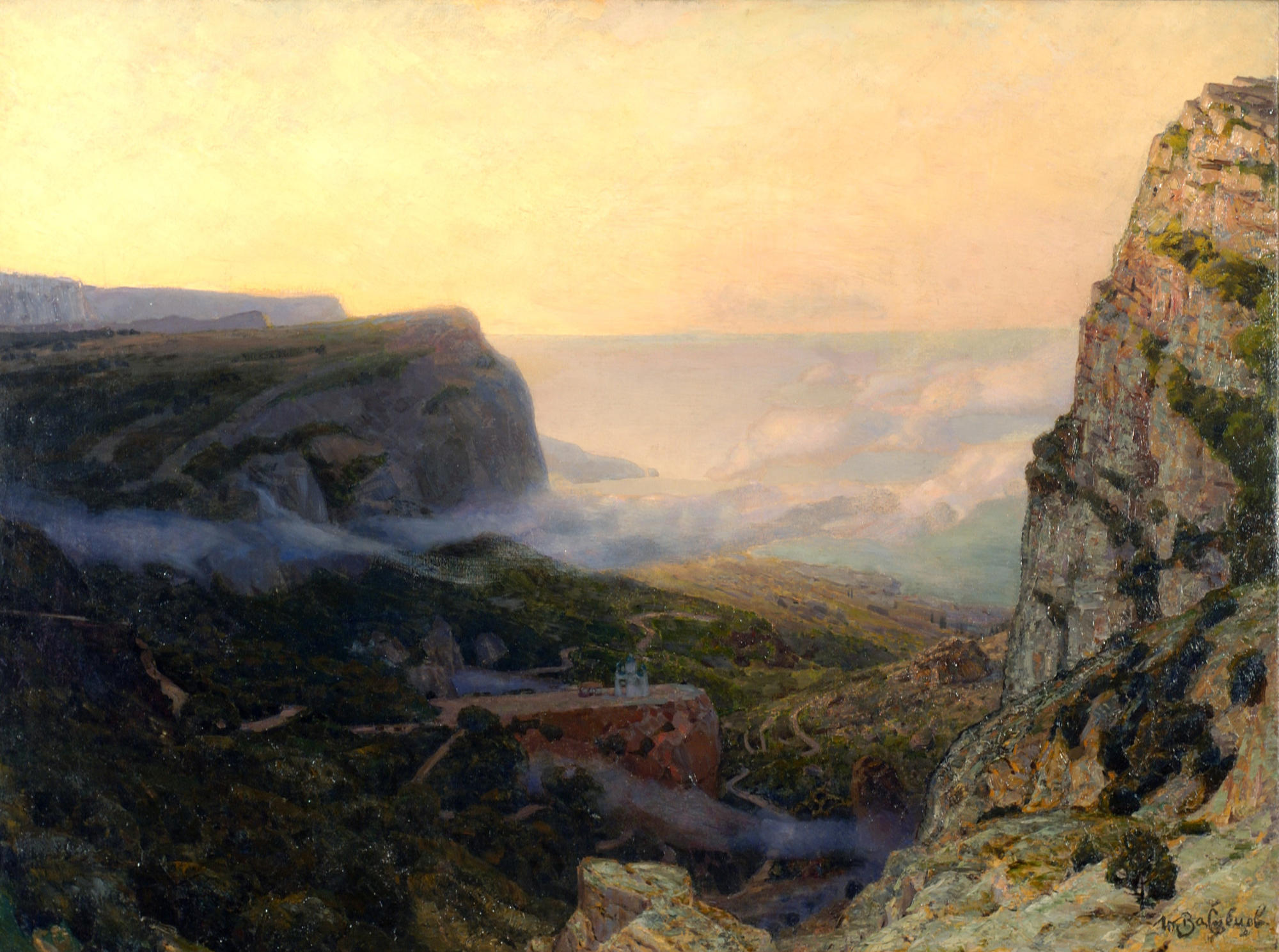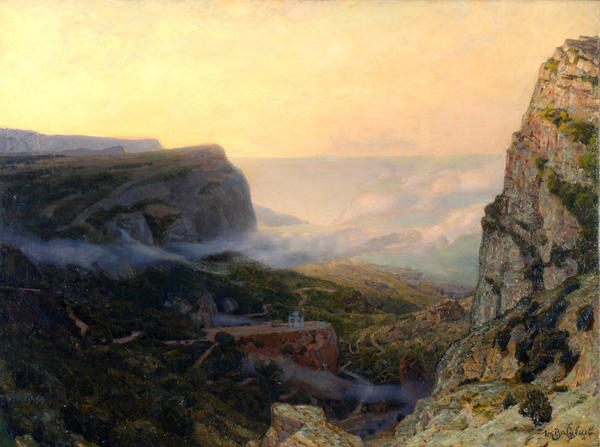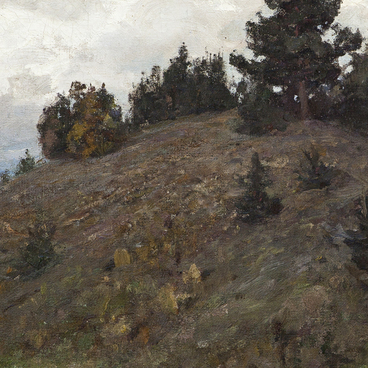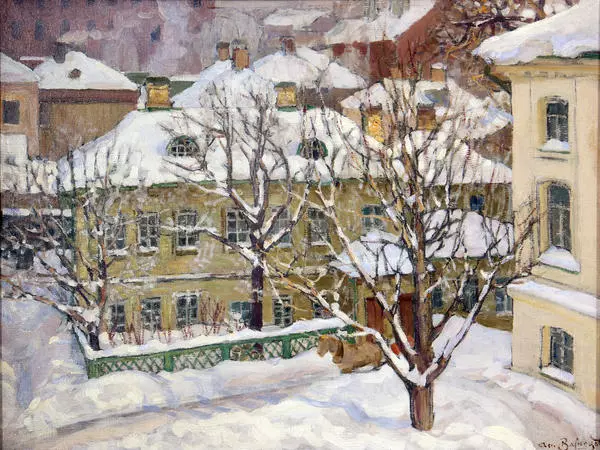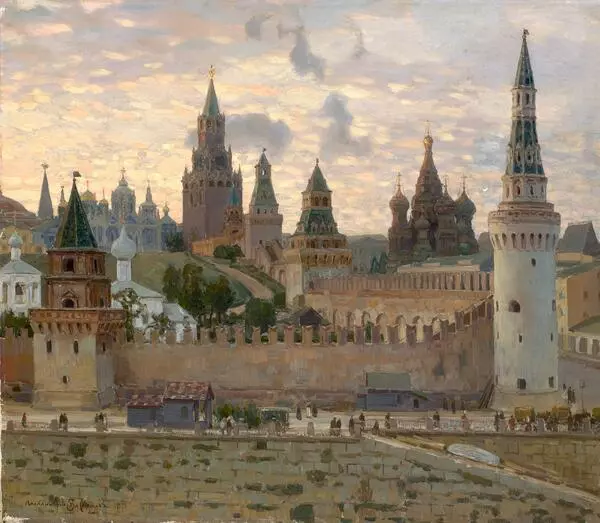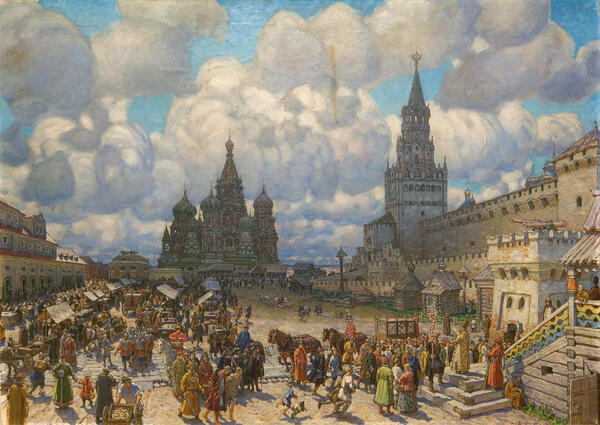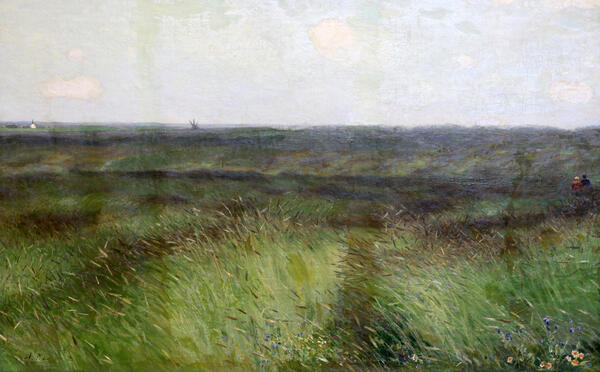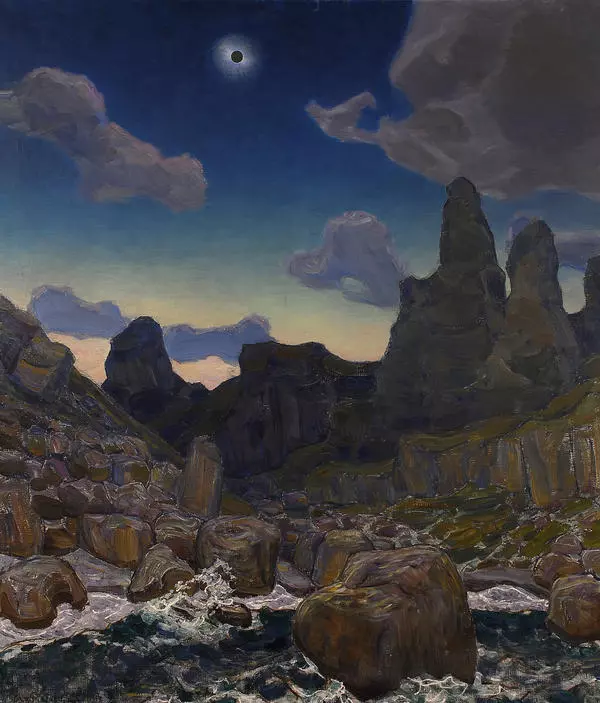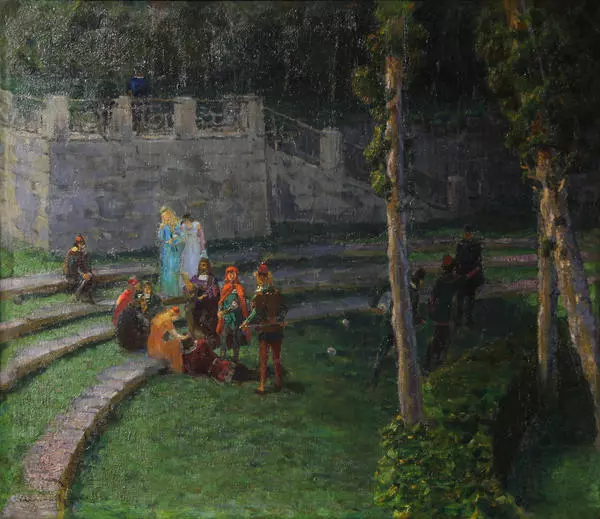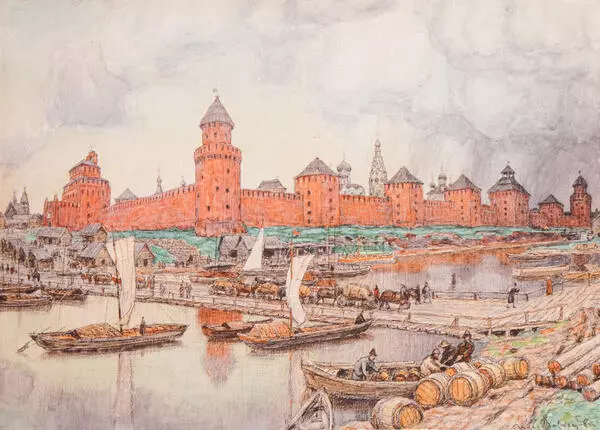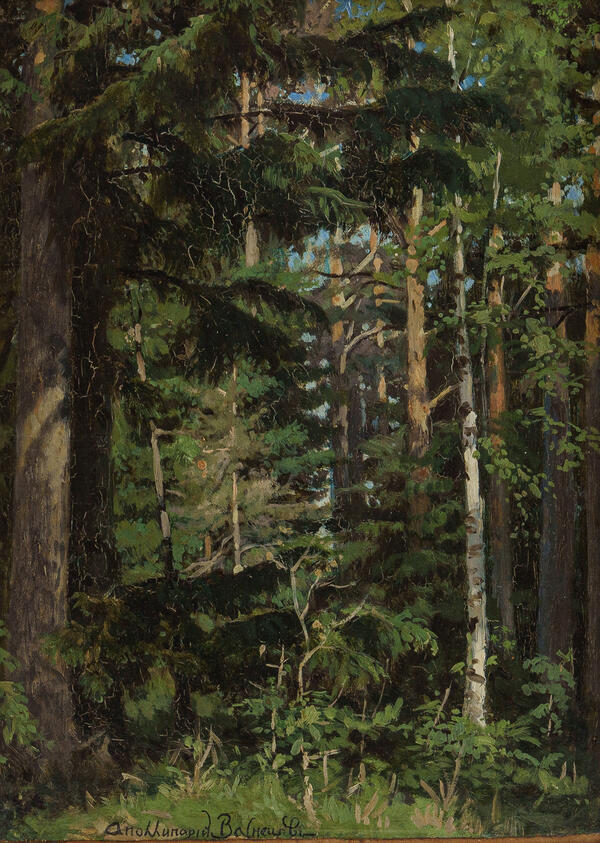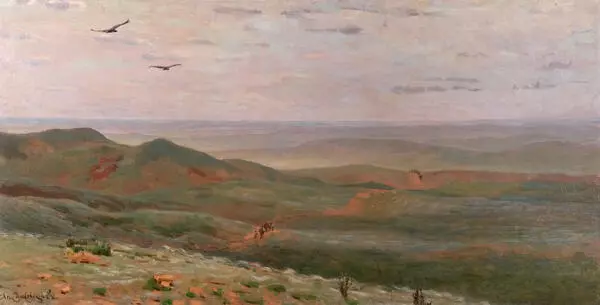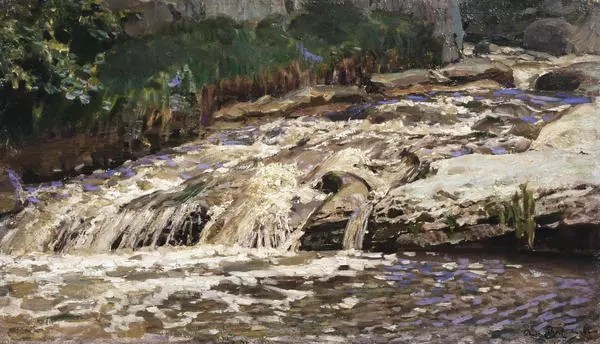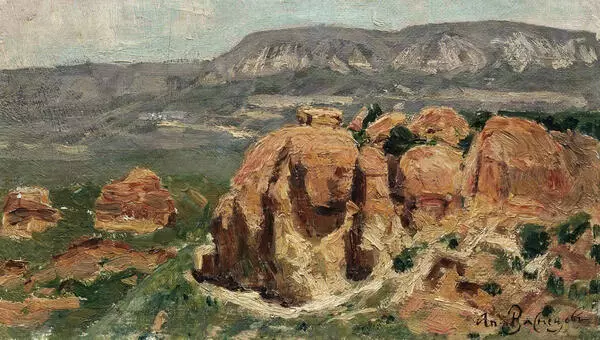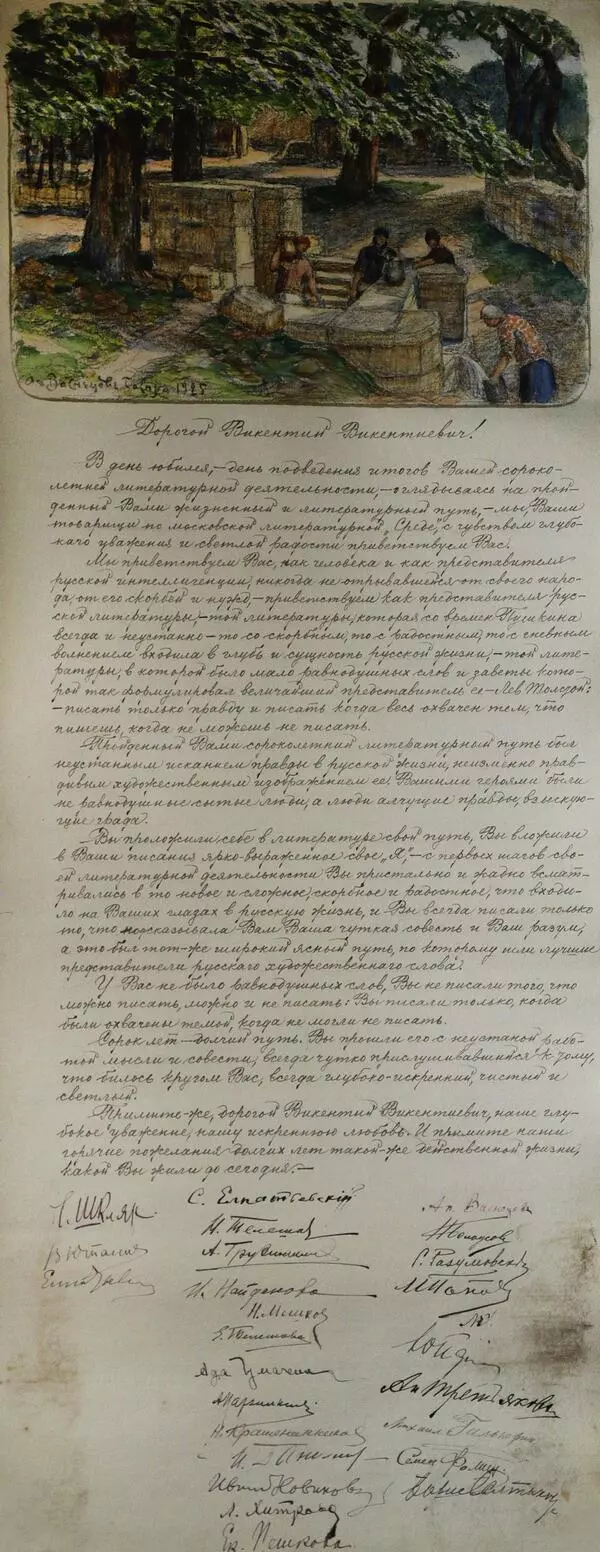Russian artist Apollinary Vasnetsov painted the landscape Crimea. Baydar Gate in 1890 based on the material collected during his trip to the Crimea. The pain ting reflects the artist’s impressions of the nature that was totally new to him. The image of the mountain pass is expressive of full of dynamics, the color scheme is intense.
Vasnetsov selected the view that attached epic nature to the landscape. He portrayed it with maximum accuracy adding poetic details — airy morning fog and soft light. The painting is done in different textures. Vasnetsov painted the forefront with thick impasto strokes preserving relief on the canvas, the rest with smooth strokes.
Apollinary Vasnetsov was a master of historic and natural landscape and an illustrator. The younger brother of artist Victor Vasnetsov, founder of the neo-Russian style, Apollinary Vasnetsov did not receive an artistic education, but entered the Vyatka School of Theology. At that time, he took private lessons from Polish artist and revolutionary Mihal Elviro Andriolli, exiled to Vyatka for participation in the Polish uprising of 1863–1864. In exile, Andriolli met Victor Vasnetsov, later they decorated with paintings the walls of the city cathedral.
Andriolli became friends with the Vasnetsovs. He saw the artistic talent in Apollinary. Each Sunday the younger Vasnetsov brought to Andriolli his drawings made at home. Apollinary painted from nature views from his window, copied mountain and forest landscapes of the Swiss landscape artist Alexander Kalam.
In 1872, Apollinary graduated from the School of Theology and moved to St.-Petersburg. His teachers became his older brother and his colleagues — artists Vasily Polenov, Ilya Repin, Vasily Maksimov. Vasnetsov chose not to enter the Academy, passed the exam for a public teacher and started his independent life in art. In 1878, he moved to Moscow where he spent time with artists of the Abramtsevo circle and took many trips around the country and abroad. In 1883, Vasnetsov started participating in exhibitions of the Itinerants that opposed the academic artists and in 1898 joined their Association. From 1901 to 1918, Vasnetsov taught in the Moscow School of Arts, Sculpture and Architecture. He died in Moscow in 1933.
Vasnetsov selected the view that attached epic nature to the landscape. He portrayed it with maximum accuracy adding poetic details — airy morning fog and soft light. The painting is done in different textures. Vasnetsov painted the forefront with thick impasto strokes preserving relief on the canvas, the rest with smooth strokes.
Apollinary Vasnetsov was a master of historic and natural landscape and an illustrator. The younger brother of artist Victor Vasnetsov, founder of the neo-Russian style, Apollinary Vasnetsov did not receive an artistic education, but entered the Vyatka School of Theology. At that time, he took private lessons from Polish artist and revolutionary Mihal Elviro Andriolli, exiled to Vyatka for participation in the Polish uprising of 1863–1864. In exile, Andriolli met Victor Vasnetsov, later they decorated with paintings the walls of the city cathedral.
Andriolli became friends with the Vasnetsovs. He saw the artistic talent in Apollinary. Each Sunday the younger Vasnetsov brought to Andriolli his drawings made at home. Apollinary painted from nature views from his window, copied mountain and forest landscapes of the Swiss landscape artist Alexander Kalam.
In 1872, Apollinary graduated from the School of Theology and moved to St.-Petersburg. His teachers became his older brother and his colleagues — artists Vasily Polenov, Ilya Repin, Vasily Maksimov. Vasnetsov chose not to enter the Academy, passed the exam for a public teacher and started his independent life in art. In 1878, he moved to Moscow where he spent time with artists of the Abramtsevo circle and took many trips around the country and abroad. In 1883, Vasnetsov started participating in exhibitions of the Itinerants that opposed the academic artists and in 1898 joined their Association. From 1901 to 1918, Vasnetsov taught in the Moscow School of Arts, Sculpture and Architecture. He died in Moscow in 1933.
